The TEW-692GR -
The TEW-692GR looks like most of the other TRENDNet routers we have tinkered with in the past. It has something of a wedge shape to it with beveled edges on the front and an open back. When you first pull it out of the box it will be covered in plastic to protect it from scratches and fingerprints. Oddly enough it also ships with the antenna pre-attached (and non-removable) along the side instead of the normal removable ones along the back. Once you get the protective plastic off the surface of the TEW-692GR is sleek and glossy. The front has LEDs for everything; you get Power, Internet, four LAN LEDs and also two Wireless LEDs one for 2.4GHz and the other for the 5GHz channel. These last two have different colors to differentiate them (2.4GHz is green and 5GHz is blue).
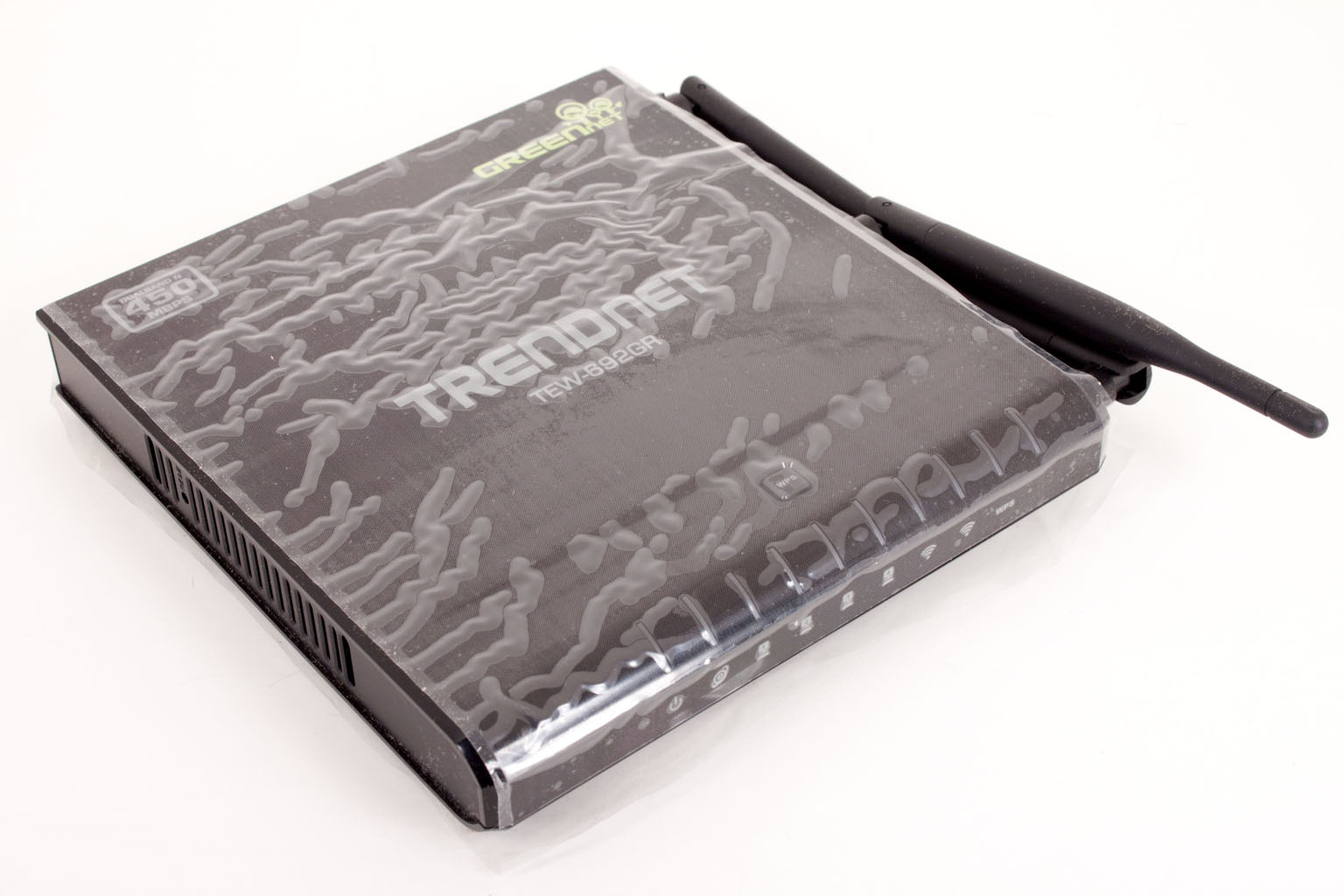 |
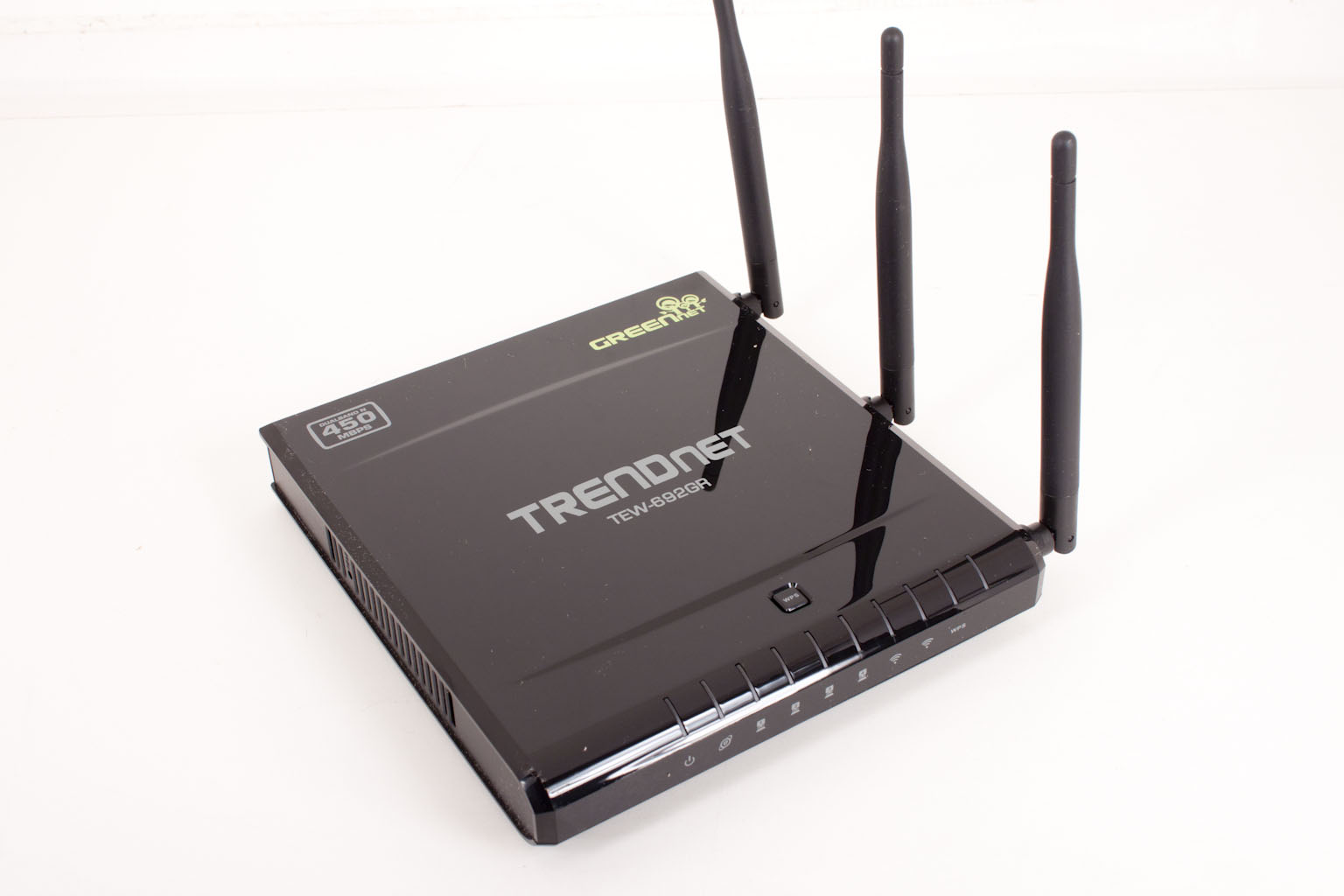 |
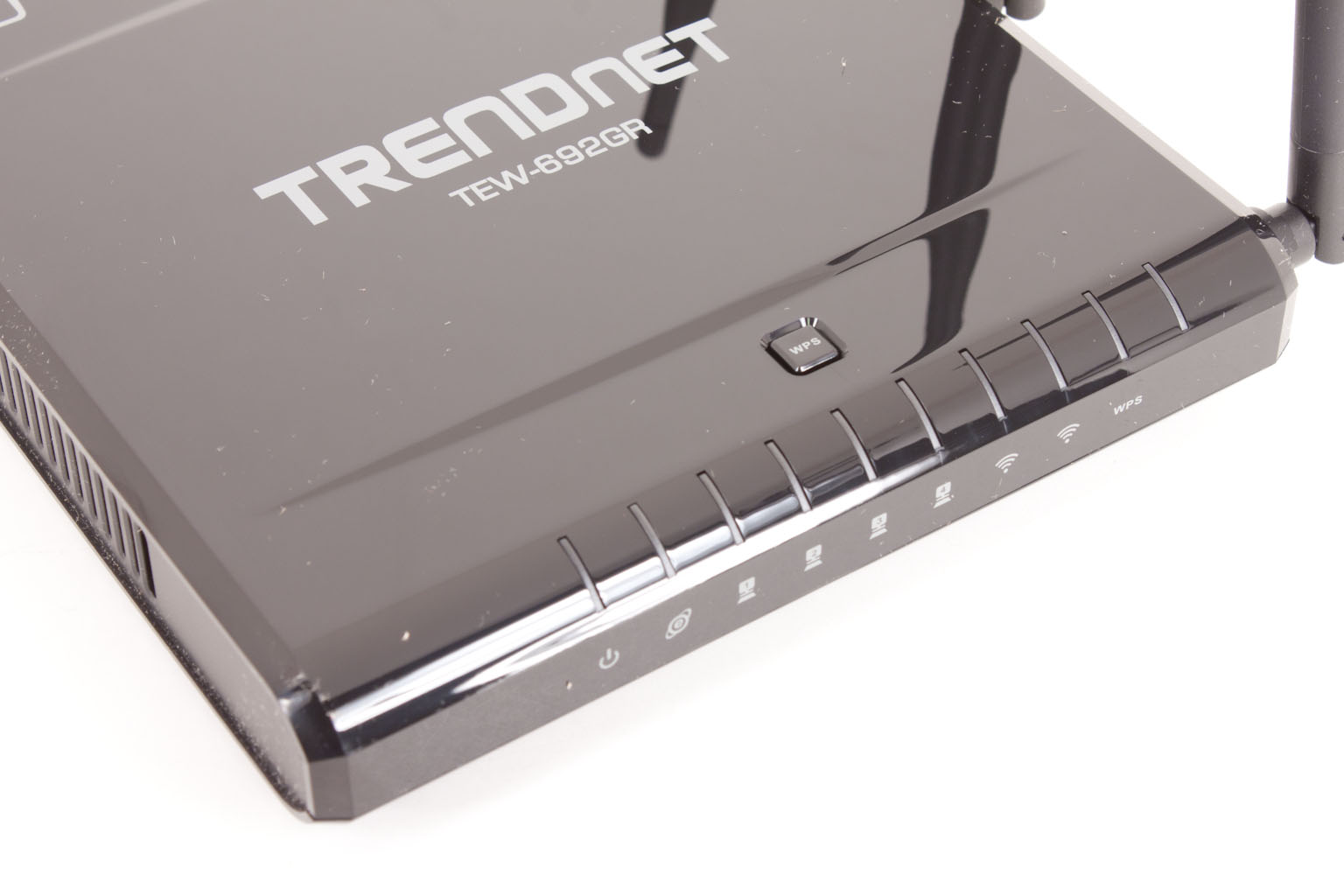 |
The back is a little more normal with four GBe LAN ports and a single GBe WAN port. You see the large amount of dust? That is an after effect of the static from the plastic wrapping. I had just cleaned that before the picture and dust just seemed to fly towards it. Both sides of the TEW-692GR have decent sized vent holes for airflow. However, once you put this in the included stand the ones on the “bottom” get covers and air flow is a little more limited (but convection should still allow hot air to escape at the top).
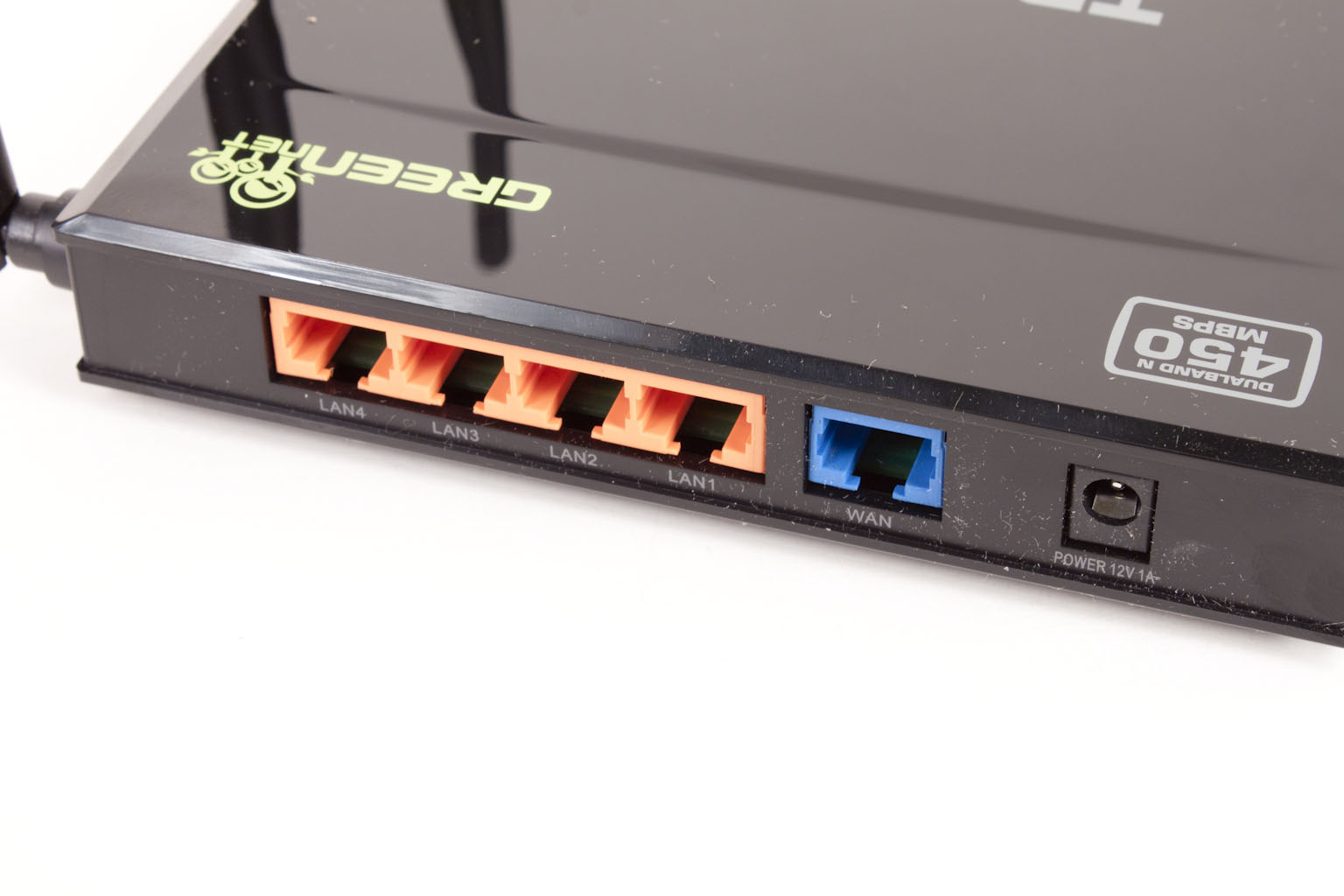 |
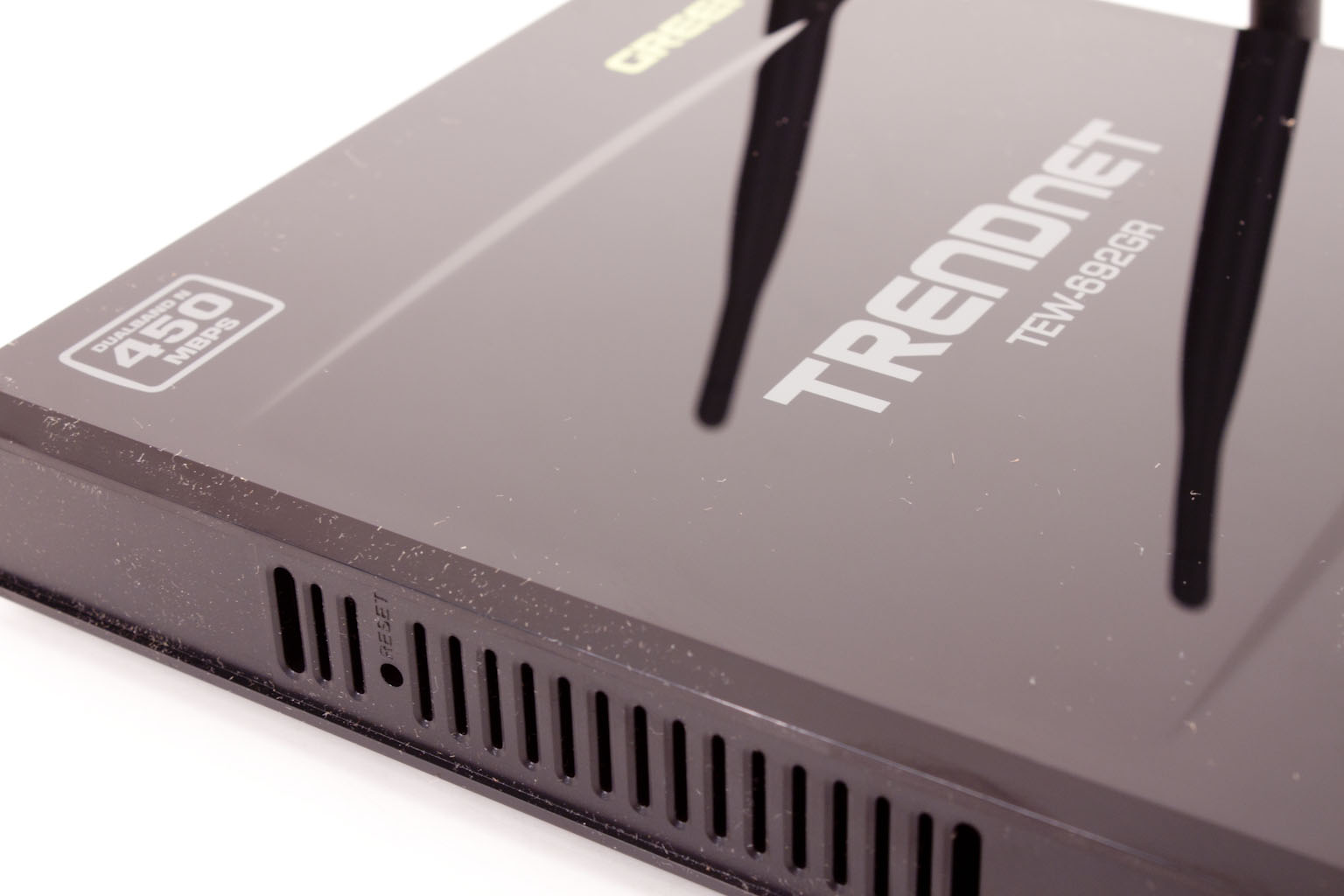 |
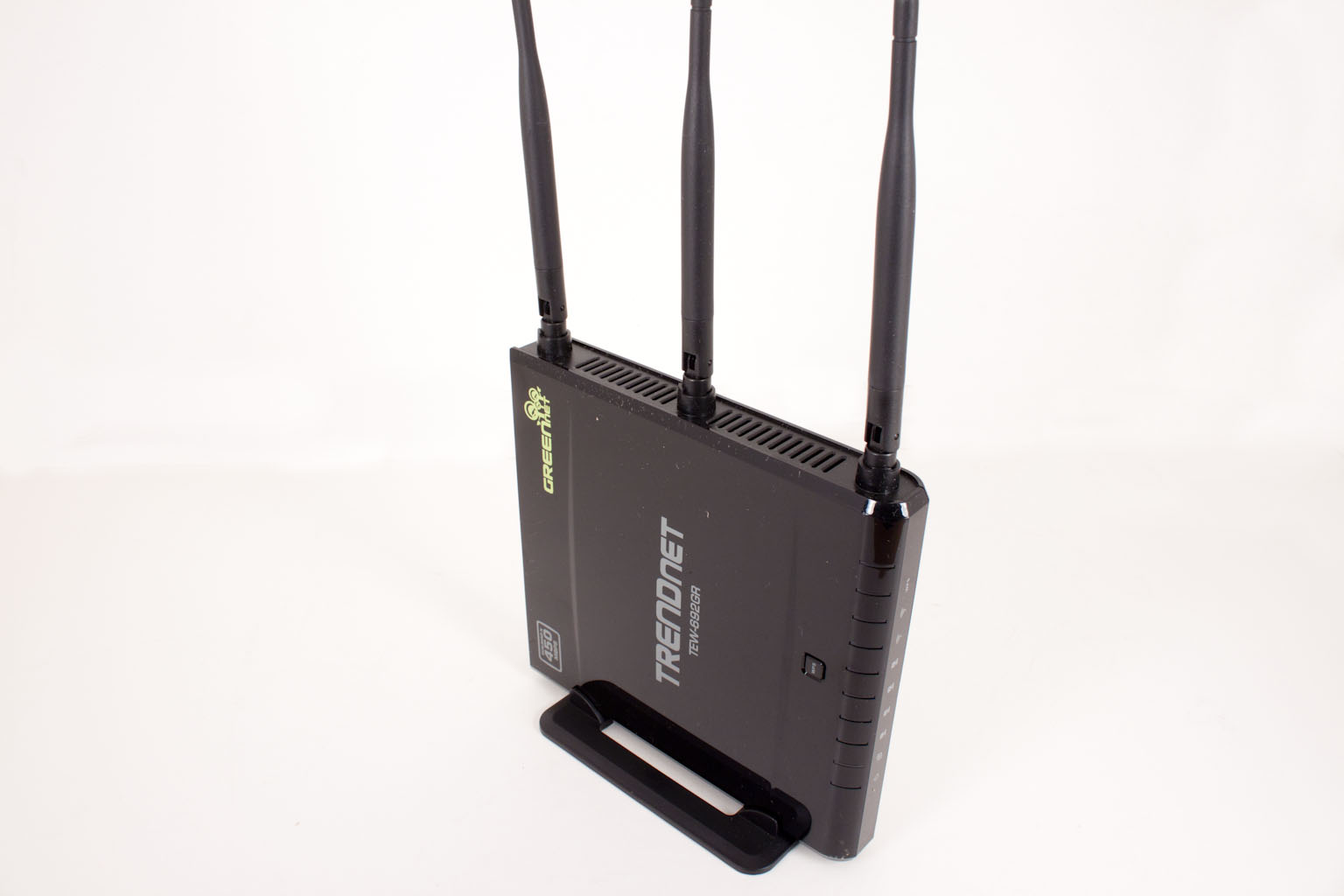 |
As we have mentioned before the TEW-692GR is a dual band concurrent router. This means that it is capable of operating in both the 2.4GHz and 5GHz bands at the same time. This capability is great as it allows you to segment your wireless traffic internally into two different frequency bands and even channels if you have the right type of adapter. It is also a GREENnet product which is supposed to give it better power efficiency than many other off-the-shelf products.
The technical specifications are shown below as copied from TRENDNet’s website.
|
Standards |
|
|
LAN |
4 x 10/100/1000Mbps Auto-MDIX port |
|
WAN |
1 x 10/100/1000Mbps Auto-MDIX port |
|
WPS Button |
Wi-Fi Protected Setup (WPS) connects with other WPS compliant devices |
|
LED Indicator |
Power, LAN 1-4, WAN, 2.4GHz Wireless, 5Ghz Wireless, WPS |
|
Power Adapter |
12V DC, 1A external power adapter |
|
Power Consumption |
9.6 watts (max) |
|
Dimension |
163 x 156 x 26 mm (6.4 x 6.1 x 1 in) |
|
Weight |
175g (6.2 oz) |
|
Temperature |
|
|
Humidity |
Max. 90% (non-condensing) |
|
Certifications |
CE, FCC |
|
Wireless |
|
|
Frequency |
|
|
Antenna |
|
|
Modulation |
OFDM: BPSK, QPSK, 16-QAM, 64-QAM |
|
Data Rate |
|
|
Security |
64/128-bit WEP, WPA/WPA2-PSK, WPA/WPA2-RADIUS |
|
Output Power |
|
|
Receiving Sensitivity |
|
|
Channels |
2.4GHz: 1~11 (FCC), 1~13 (ETSI) |
It is a nice product on paper, so now let’s see what it looks like in action.



